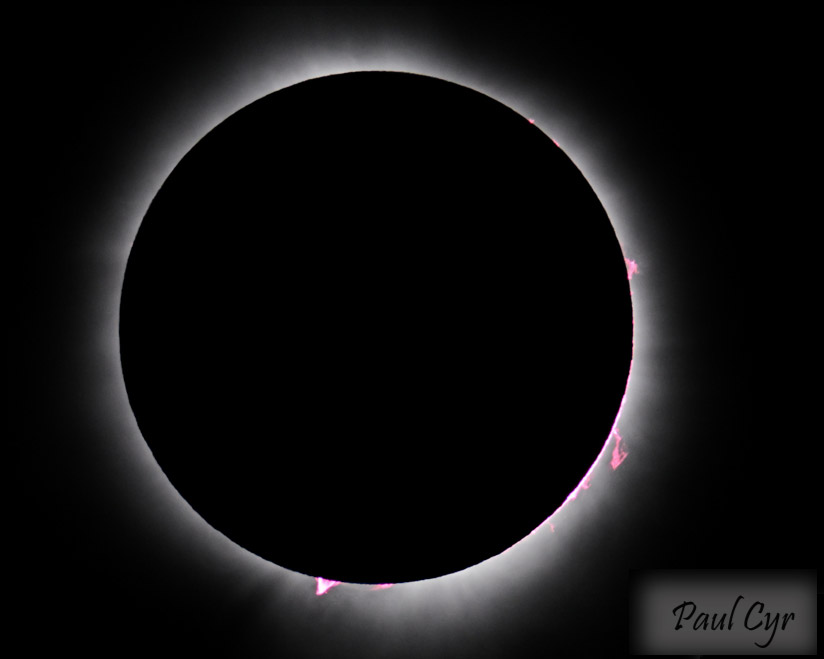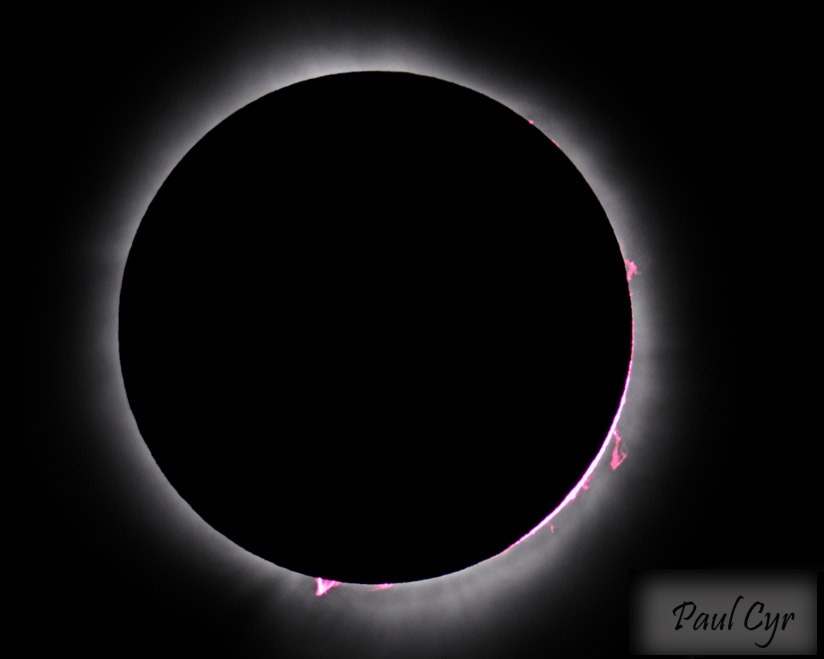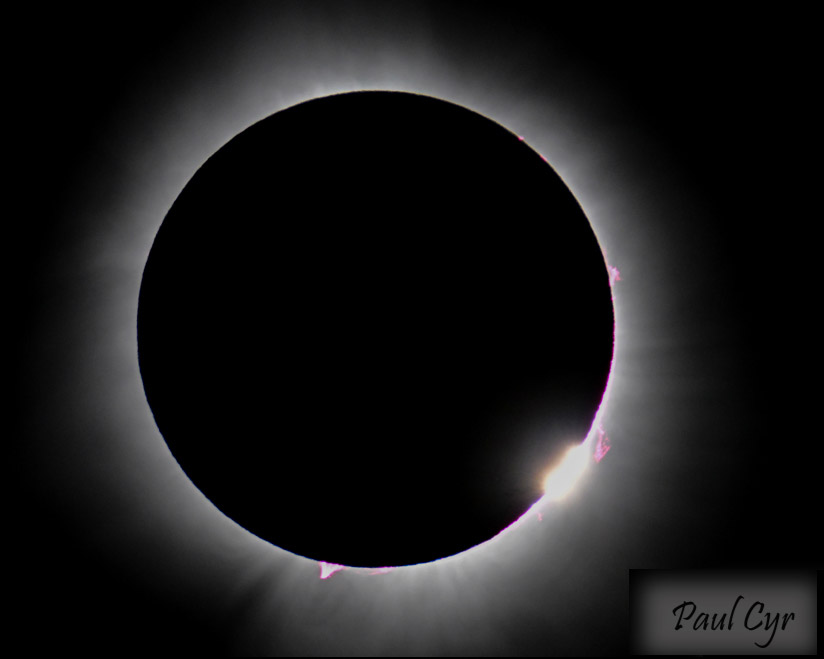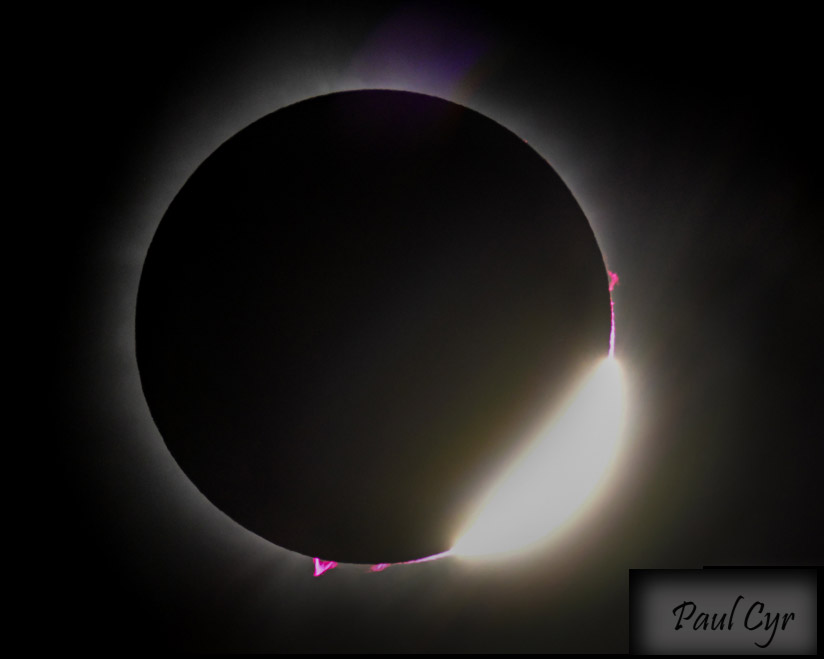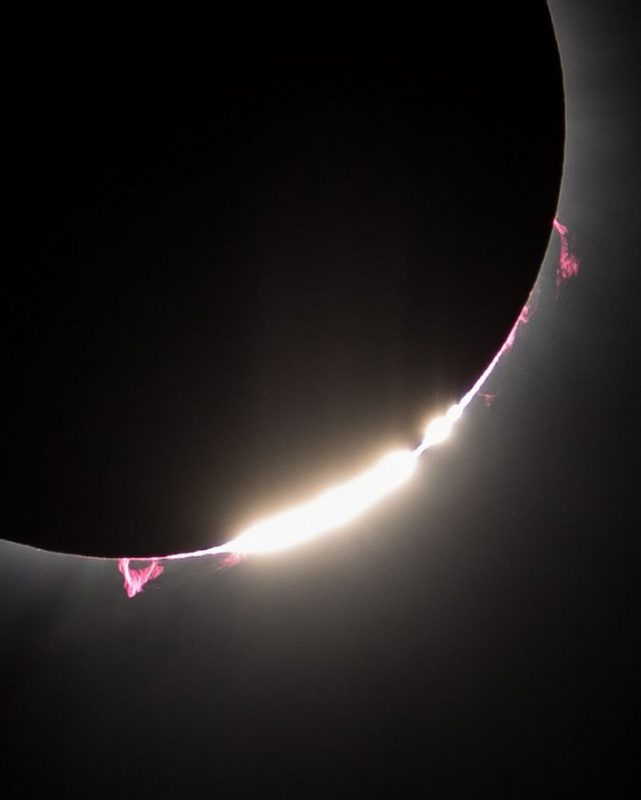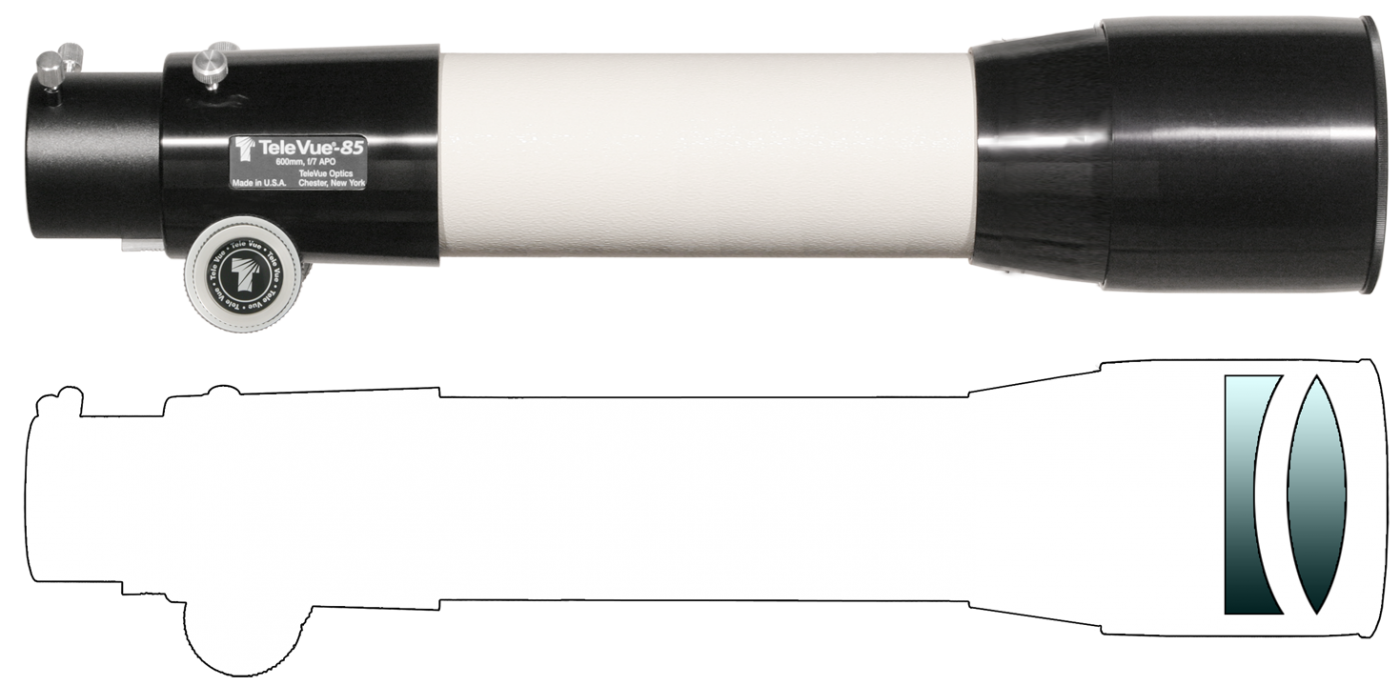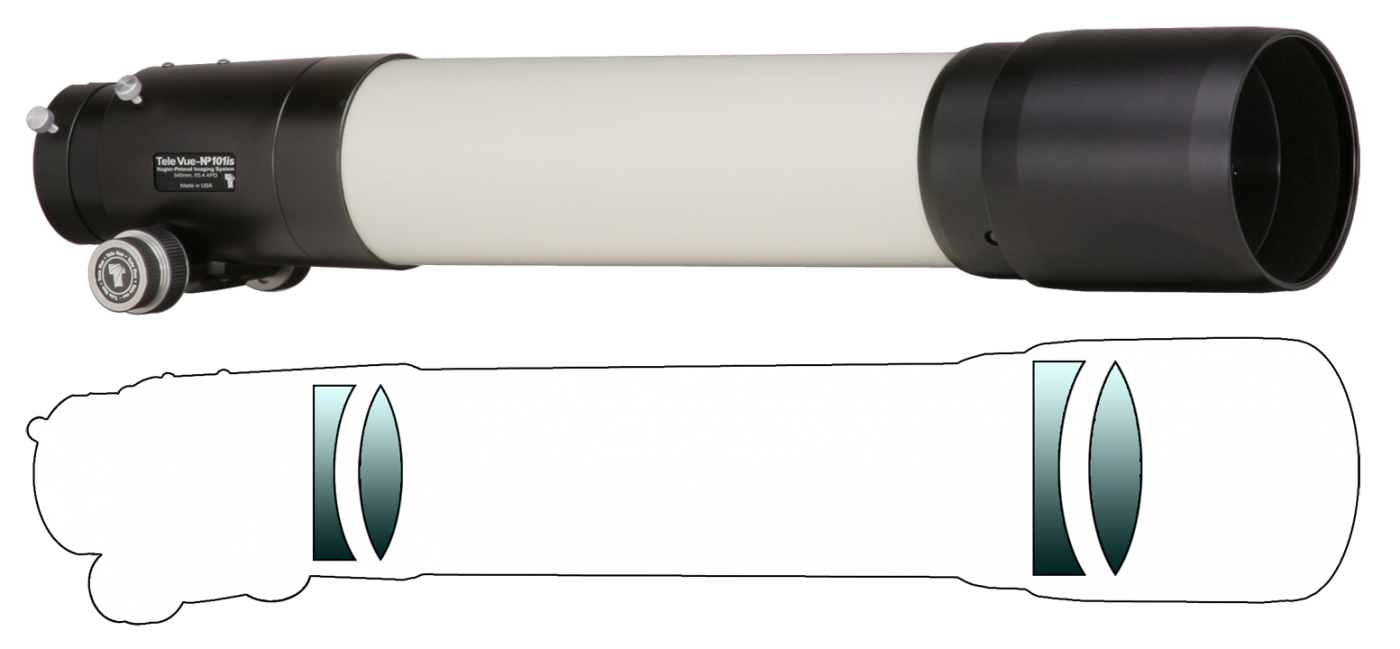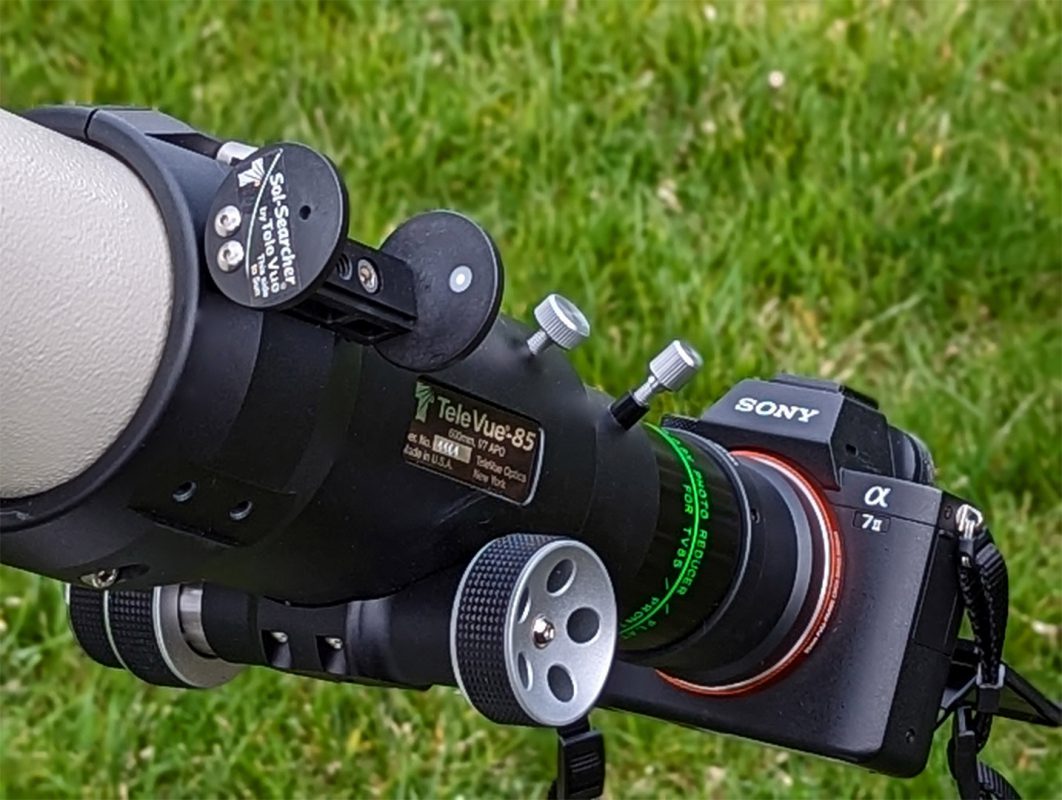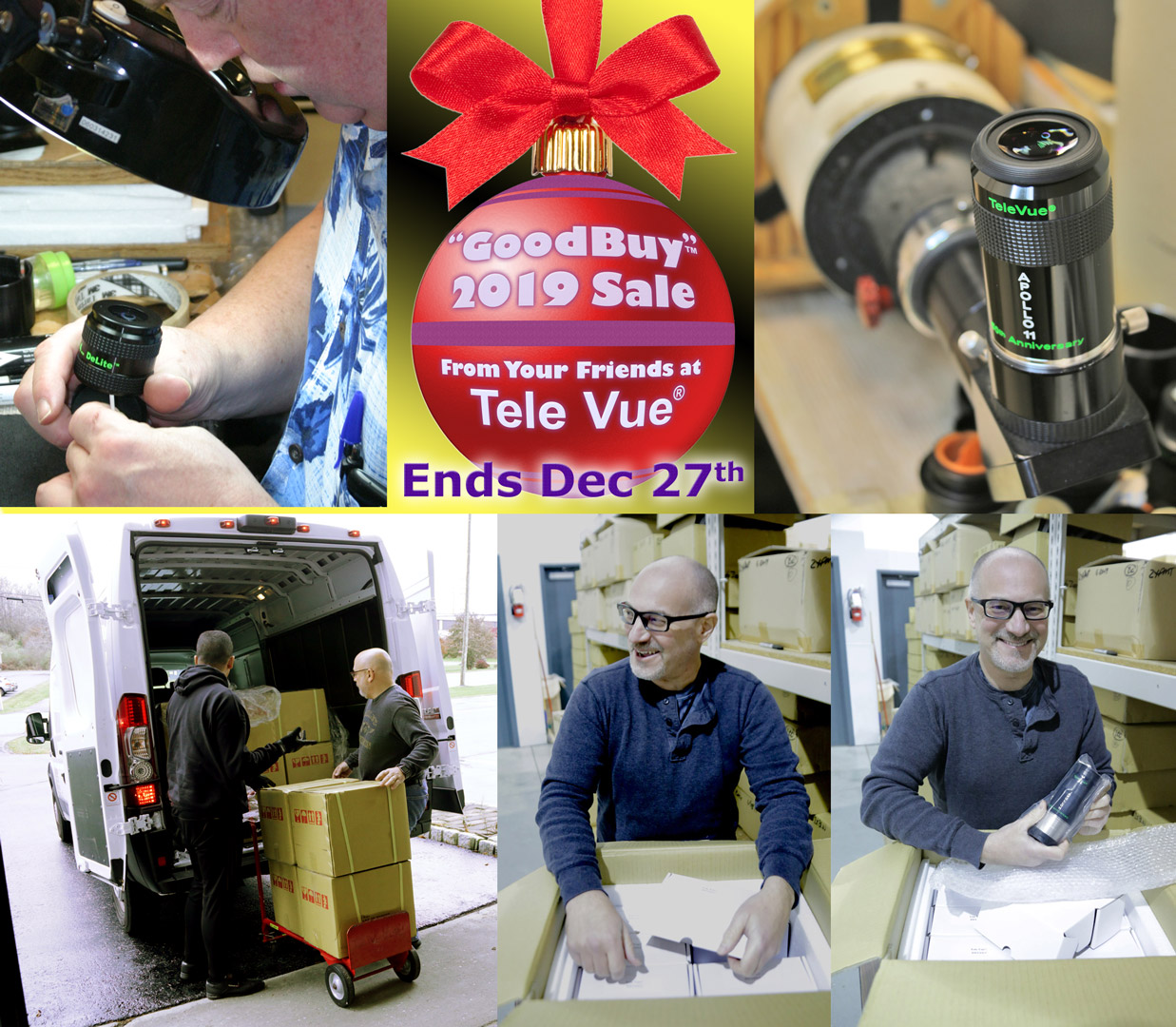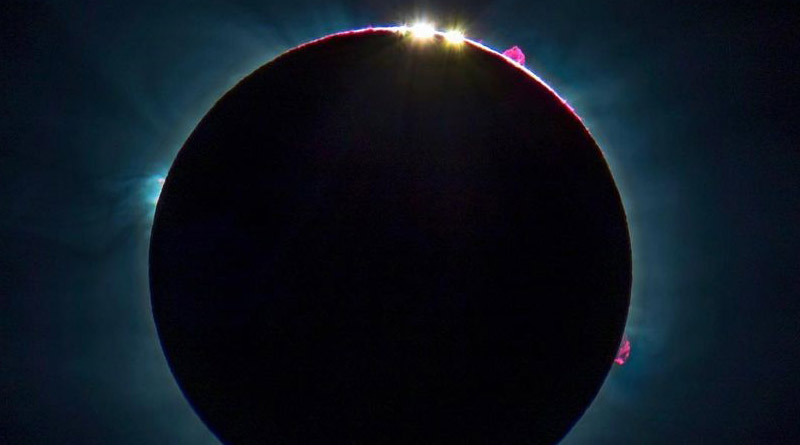Your 8 April 2024 Solar Eclipse Images!
In the days before the April 8, 2024 North American Eclipse, eclipsophiles panicked when Texas skies were predicted to be cloudy while the extreme Northeast stayed clear. This was the opposite of the long-term forecast used by many to plan their eclipse trip. Choosing a new observing site also meant a change in totality duration, with those going east losing a minute compared to locations near the Texas/Mexican border.

This blog chronicles some Tele Vue telescope owner’s attempts at capturing totality, including the Corona, Bailey Beads, and Diamond Ring effect.
Tele Vue-NP101is in Northern Maine
Paul Cyr didn’t have to travel far to find this perfect place. From his farm in northern Maine, which had the best weather in the U.S. for this event, he was perfectly positioned for imaging. This set of images around and past totality were taken with a Tele Vue-NP101is (540mm at f/5.4) Nagler-Petzval APO refractor and Nikon Z8 full-frame mirrorless camera.
Total Solar Eclipse Around Totality by Facebook user Paul Cyr. All rights reserved. Used by permission. Top, (L/R): Sun in Totality with red prominence visible along the solar limb. Sun begins to emerge behind the Moon after 3rd contact. Bottom, (L/R): Double-diamond ring effect as sunlight streams through valleys on the Moon. In the final frame a big diamond ring begins to hide prominence. These images were taken with a Tele Vue-NP101is (540mm at f/5.4) Nagler-Petzval APO refractor with Nikon Z8 full-frame mirrorless camera at 1/5000s and ISO 1600.
Tele Vue-85 in Central Arkansas
Greg Mitchum setup the following photographs a few miles east of Atkins, Arkansas, at the south end of the Union Grove Church parking lot. “Apparently, about 50+ people had the same idea from all over the country including, Oklahoma, Arkansas, Tennessee, Oregon , Alabama, Minnesota, and even Norway (I heard)”.
Solar Eclipse 2024 by Instagram user Greg Mitchum. All rights reserved. Used by permission. Imaged with Tele Vue-85 APO refractor using Canon 6D full-frame camera and all mounted on the portable Tele Vue Tele-Pod tripod. Top (L/R): First image was captured right before totality and the next just seconds before the end of totality. Bottom (L/R): The limb of the Sun emerges. In the next image Baily’s beads “explode” through the lunar valleys and are forming a diamond ring.
Tele Vue Ranger in Northern Vermont
The town of Newport, in the northeast corner of Vermont, is just a stones-throw from Canada. Over 10,000 people gathered along the shores of Lake Memphremagog to view the event. Among them was author Ruben Kier (“The 100 Best Astrophotography Targets”, a Monthly Guide, @StardoctorOrg on YouTube) who recorded the following through a Tele Vue Ranger telescope. It is a concise video showing phases, Diamond ring, Baily Beads, and Totality.
Tele Vue-85 on Lake Champlain
Crown Point State Historic site on the New York side of Lake Champlain is known for the preserved remains of “His Majesty’s Fort at Crown Point”. Throughout the 1700s, control over this point, overlooking a 2,000-foot narrows to Chimney Point, Vermont, was contested by the British, French, and American Revolutionaries.
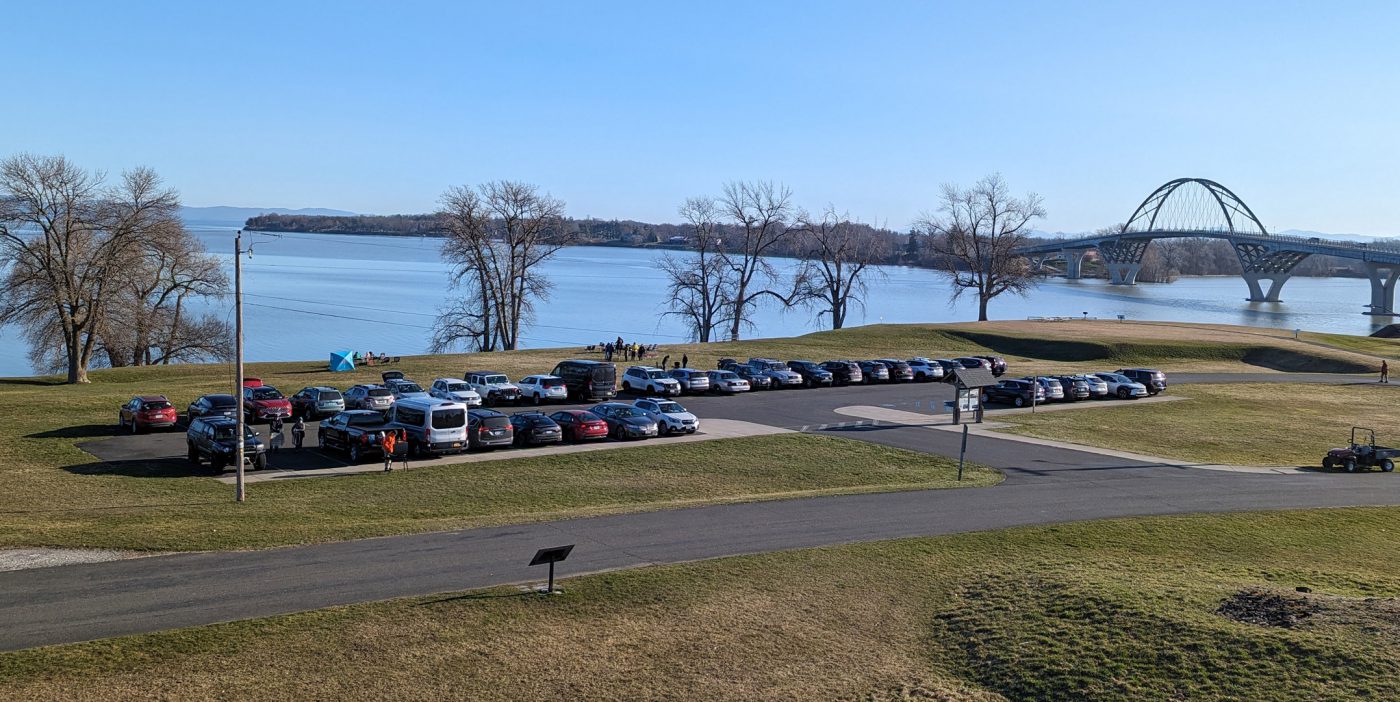
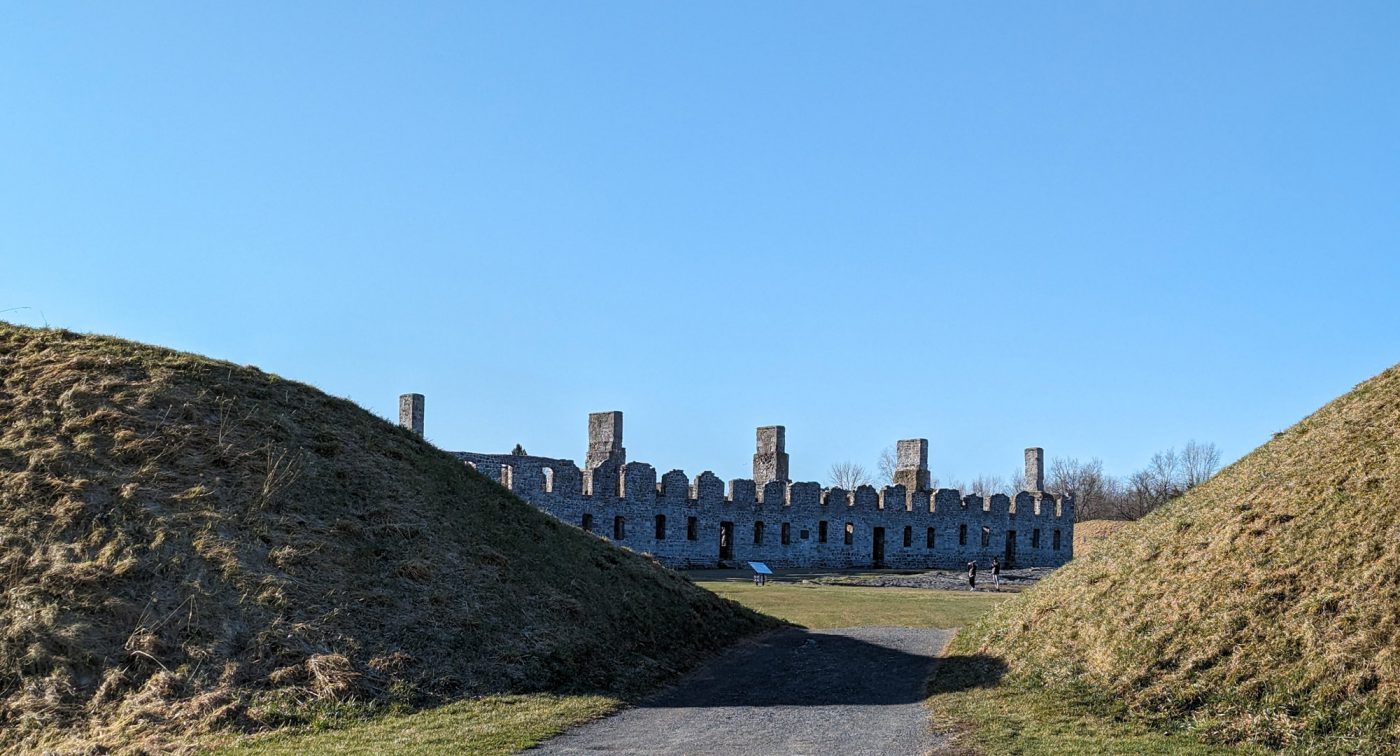
For the April 8, 2024 eclipse, it was an officially designated observing area inside the band of totality. As you can see in the above photos, the sky was clear with thin clouds not bothersome enough to ruin the show. This turned out to be a much better location than the long-term forecasts had predicted. Early-birds were able to park in the small asphalt parking spaces while the vast majority of people were directed to park on designated grassy areas. With the partial phase not commencing until 2:13 PM that day, there was plenty of time for visitors to walk through history and visit the museum on site. Many choose to take a walk to Vermont over the modern Lake Champlain Bridge.
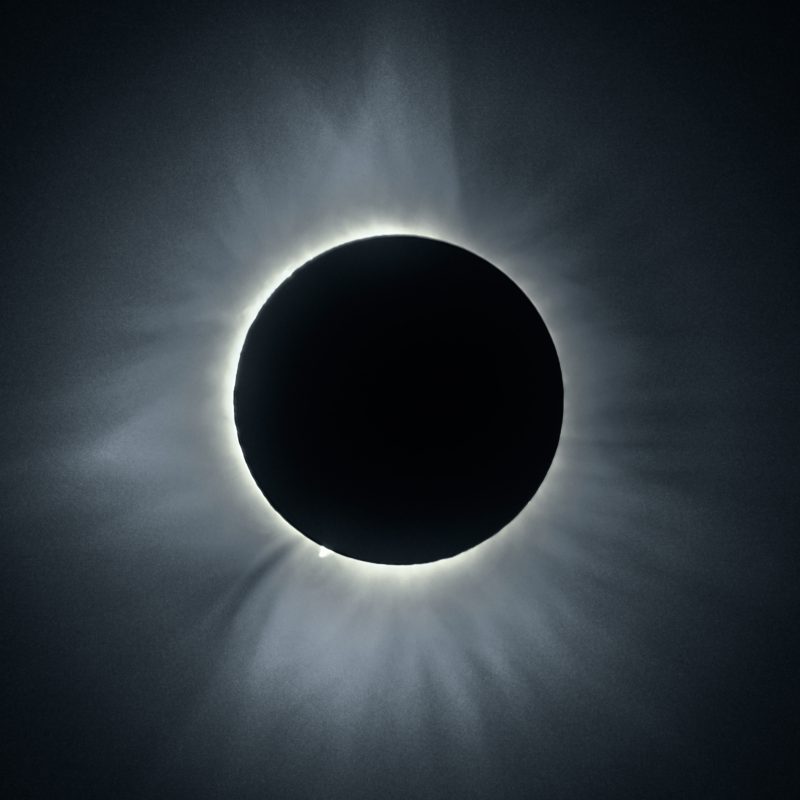
The heart of the image setup at Crown Point, NY, was the Tele Vue-85 APO refractor telescope (600mm @ f/7). Equipped with the Tele Vue TRF-2008 0.8x Reducer/Flattener, this scope became a 480mm f/5.6 flat-field lens. The attached camera was a Sony Alpha II mirrorless with full-frame sensor. A Tele Vue Sol-Searcher Sun-finder assisted in tracking the Sun using the slow-motion controls on the Alt-Az mount. Over the scope’s dew shield, a DIY filter box with Baader AstroSolar Filter Film was used to attenuate the Sun’s rays so that eclipse progressive could be tracked by the camera.

At totality, the filter box was removed in order to image the faint Corona —or Sun’s atmosphere. Images from 1/500s to 1/8000s were taken at two ISOs. These images were calibrated with flats and bias frames before stacking and processing created the final image.

Lake Champlain is also known for “Champ” the local “Lake Monster” that has been sighted on the 107-mile long freshwater body of water. With everyone in the area gazing up at the Sun, it would have been a good chance for Champ to surface and view totality without being noticed.

Tele Vue-NP101 from Harrisburg, IL
William “Dr. Billy” Teets, the Director of the Vanderbilt Dyer Observatory in Brentwood, TN, relocated to the town of Harrisburg in southern Illinois to video the entire Total Eclipse in Hydrogen-alpha light. The result was over 2hr 36min of footage. Here is an explanation of the setup and how imaging was done.
The Tele Vue-NP101 was fitted with a SolarScope SF-100 etalon (and corresponding blocking filter). We used a ZWO ASI533MC Pro color camera for imaging, and the entire setup was mounted to a Vixen Sphinx equatorial mount. It is the instrument to the farthest right in the attached image of the setup, and we use this same setup for regular solar viewing at Dyer Observatory. Since we arrived at the site in Harrisburg, IL, mid-morning, I didn’t have an opportunity to get the mount really well polar aligned. But, as it would happen, the final placement gave a pretty good alignment, and I only had to make small adjustments over the duration of the eclipse to keep the Sun reasonably centered in the field of view. We had a similar setup but with a Hershel wedge to do white-light imaging, and two other telescopes provided similar views and were used for eyepiece viewing.
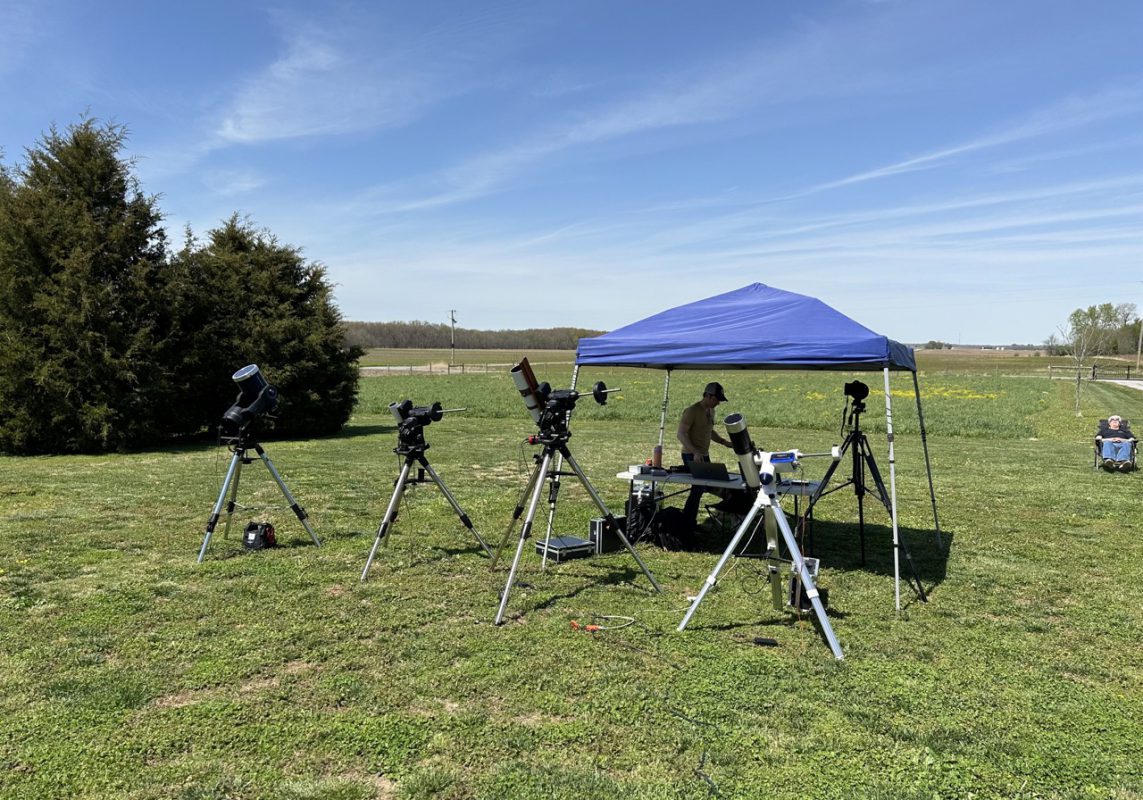
Sky conditions started out very cloudy with a very low ceiling. I figured the clouds would burn away once the Sun started warming everything; thankfully, they did. Seeing was pretty good. We had a few passing cirrus clouds every now and then, which is why some of the frames of the video change contrast dramatically despite my efforts to compensate for that. Temps were in the mid-70s, close to 80 by noon. Once we had reached about 50% coverage, it was a weird sensation to step out into the relatively bright sunlight but feel very little heat on your face – it felt more like stepping out under a really bright streetlight. By about 75% coverage, you couldn’t feel any heat on your skin from the direct sunlight. One other interesting aspect: The site we were at had a purple martin nest box, and the martins were flying around and singing quite a bit that morning. Once we started getting near totality, they began making their way back to the box. Once we were out of totality, they had returned to the sky after only a few minutes to resume their usual daily activity.
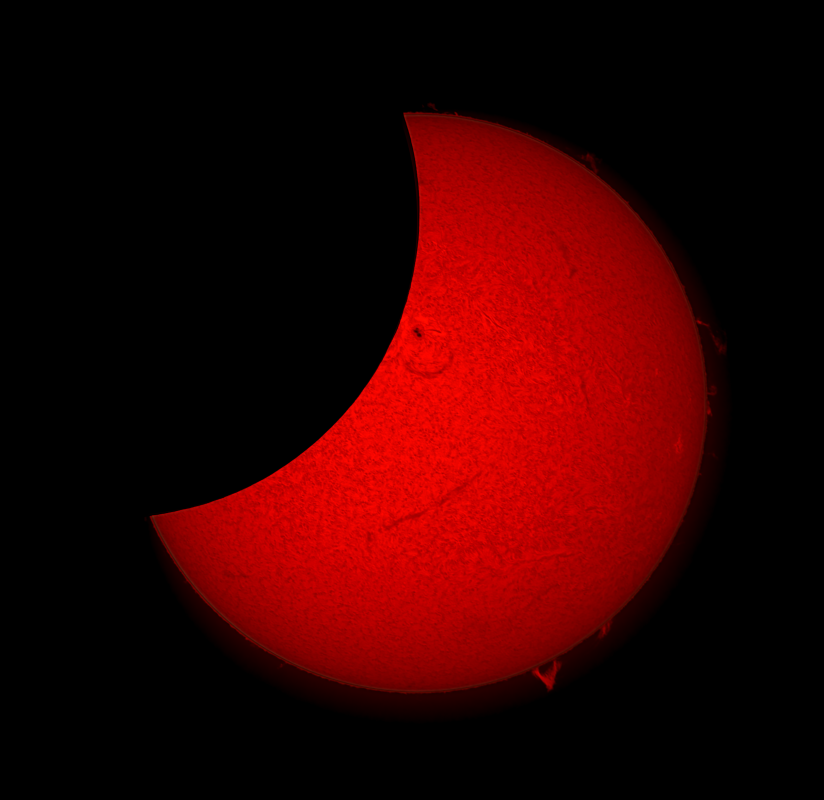
The video in the post was made from composite frames. Just as the eclipse began, the camera took a 15-second video at a longer exposure to pick up the prominences. It then took another 15-second video immediately after at a shorter exposure to get the details of the chromosphere. Once that was completed, there was a 30-second delay before the sequence was begun again and repeated for the duration of the eclipse. I think there were around 320 15-second videos total. Frames of the videos were stacked to get final images, which were then aligned to create short- and long-exposure videos. I then overlaid the videos in Adobe After Effects to create a composite video to show the chromosphere and prominences.
Did you observe, sketch, or image with Tele Vue gear? We’ll like your social media post on that if you tag it #televue and the gear used. Example:
#televue #tv85 #zwoasi174 #solareclipse
Do you want your Tele Vue images re-posted on Tele Vue Optics’ Social Media accounts? Use this hashtag for consideration:
#RPTVO



